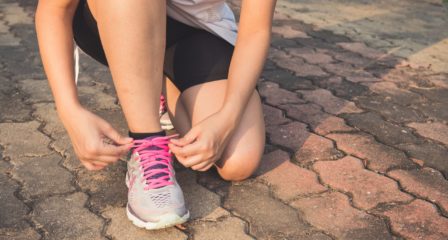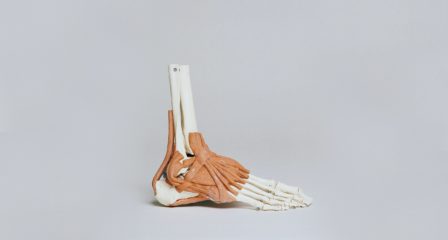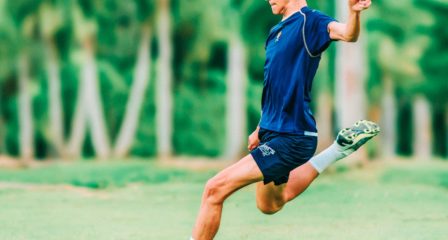ACHILLES TENDINOPATHY AND RETURN TO RUNNING AT THE INJURY CLINIC
Most people who experience achilles tendon pain stop running to help rest the tendon, but then the pain returns on the next run. Other runners find the tendon warms up and is pain free for the rest of the run, so dismiss it as tightness only to wake the next day with worse pain when getting out of bed. Both of these scenarios are classic signs of achilles tendinopathy.
Should I keep running or stop when I have achilles tendinopathy?
This is the common question every patient asks when visiting The Injury Clinic, and we agree it is the most important. What we know is that there is no simple plan and often the best approach is including three main elements to guide: Pain, strength and fitness.
Pain guided:
- Use a pain scale to understand the level of loading: 1-2/10 safe and low tendon load, 3-5/10 moderate pain that may be present after activity-avoid pain that sits at above this level for a long period post activity, 6-10/10 tendon load is far too high, reduce activity
- Pain is usually delayed post activity that loads the tendon, allow 3-4/10 for running that does not increase or stay for 24-48 hours post activity
- You are not doing damage to your tendon if you feel pain, especially if it is less than 4/10
- Consider the amount of time the pain takes to settle, especially in the morning as a guide to improving tendon loading
Fitness Guided:
- The longer you spend away from running, the lower your cardiovascular fitness will be on return. If you ran 10km at 5min per km pace 12 months ago it is not appropriate to aim for this initially.
- Avoid running under high fatigue, ypou may start at 2 mins run, 1 min walk intervals in the early part of return to run to guide tendon load, build fitness and reduce fatigue based tandon loading
- Allow 2 days between runs to gauge tendon pain, allow recovery and avoid flare ups when fitness is building
Strength guided:
- If you have tendinopathy you are likely to have reduced power, endurance and strength of your calf muscle group
- Just like running, this fitness takes time to build and running can be guided when considering the strength gains required.
- Soleus strength should be prioritised: as a guide a seated calf raise should aim for 1.5x Body weight prior to resuming pre injury running levels
- Don’t forget the uninjured side! Even without pain, people with Achilles tendinopathy have reduced plantar flexor strength on the opposite side.
The return to run or continue to run decision is not easy, it needs to be individualised and can often require equal input from the patient and the clinician. There can be periods of trial and error which can be frustrating, but the ultimate aim is to return to you to a stronger and level than pre-injury. At The Injury clinic we understand the frustration of not being able to do the activity you love, but we work with you to make sure you stay active and happy through the rehab process.
REFERENCES:
Silbernagel, K. G., Thomeé, R., Eriksson, B. I., & Karlsson, J. (2007). Continued sports activity, using a pain-monitoring model, during rehabilitation in patients with Achilles tendinopathy: a randomized controlled study. The American journal of sports medicine, 35(6), 897-906.
Murphy, M., Travers, M., Gibson, W., Chivers, P., Debenham, J., Docking, S., & Rio, E. (2018). Rate of improvement of pain and function in mid-portion Achilles tendinopathy with loading protocols: a systematic review and longitudinal meta-analysis. Sports Medicine, 48(8), 1875-1891.
Grävare Silbernagel, K., & Crossley, K. M. (2015). A proposed return-to-sport program for patients with midportion Achilles tendinopathy: rationale and implementation. journal of orthopaedic & sports physical therapy, 45(11), 876-886.
For more information on Physiotherapy at The Injury Clinic, please click HERE
To book a consult online, please click HERE



